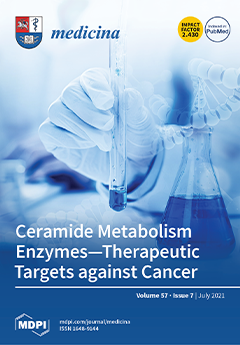Background and Objectives: Two-dimensional speckle tracking echocardiography (2D-STE) is viewed as an outstanding technique, competent of uncovering earlier subclinical myocardial anomalies compared to conventional echocardiography. A few endeavors adopted 2D-STE as a tool to estimate right ventricular (RV) function in subjects with end-stage kidney disease (ESKD). There is no published prospective study on an adult ESKD cohort exploring the consequences of commencing elective hemodialysis (HD) on RV behavior.
Materials and Methods: We investigated the RV systolic function using traditional (tricuspid annular plane systolic excursion—TAPSE, RV fractional area change—FAC) and 2D-STE (RV free wall longitudinal strain—RVFWLS) parameters following the initiation of HD. We enrolled 79 consecutive patients with ESKD and assessed them in four steps—at baseline, before HD, and at 3, 6, and 12 months.
Results: RVFWLS, FAC, and TAPSE values had a significant increase at 3, 6, and 12 months from baseline (
p < 0.001) and a significant increase at 6 months from 3 months (
p < 0.001). However, differences between 12 months and 6 months were not significant (
p > 0.05) according to Dunn–Bonferroni post hoc tests. Seventeen deaths were recorded before the completion of the study. RVFWLS, FAC, and TAPSE values significantly decreased at 3 and 6 months in all 17 deceased patients, in clear opposition with the values survivors had. All the studied parameters had a significant prediction power on mortality (
p < 0.001) having an outstanding performance: baseline-RVFWLS (AUC: 1.000 (95% C.I.: 1.000–1.000)), baseline-FAC (AUC: 0.974 (95% C.I.: 0.942–1.000)), and baseline-TAPSE (AUC: 0.962 (95% C.I.: 0.920–1.000).
Conclusions: Our study is the first to investigate RV function by 2D-STE and correlate it with traditional methods in patients with ESKD before and after the initiation of HD. RV function was significantly ameliorated at 3, 6, and 12 months compared to the pre-HD values. FAC and RVFWLS gain an outstanding prognostic role on mortality in this population.
Full article






